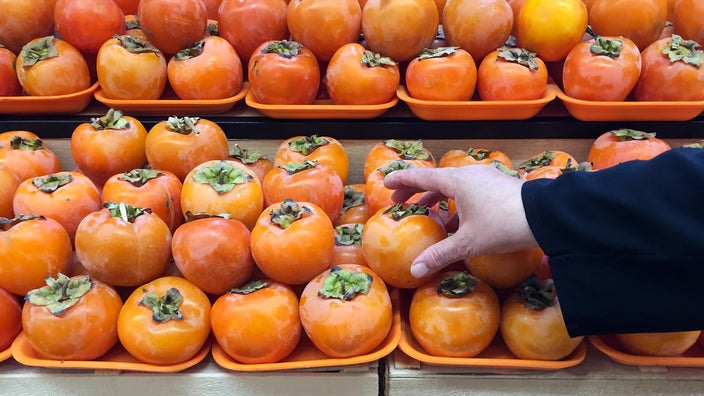
16 High-Fiber Fruits That Can Boost Your Gut and Overall Health
Key takeaways:
Eating fruit is an excellent way to get more fiber in your diet. Fruits that are high in fiber include avocados, raspberries, and guava.
Fiber from fruit can help ease constipation, improve gut health, and reduce cholesterol levels. Fruit also has vitamins, minerals, and other antioxidants that are good for your overall health.
You should try to get about 28 g of fiber each day. Eating 2 cups of fruit daily is a great way to contribute to your overall fiber intake.
Table of contents

There are a lot of good reasons to eat fruit. It can help keep you hydrated, boost your immune system, and improve skin health. Along with providing important vitamins and minerals, fruit is one of the best sources of fiber. And fiber is one of the most important parts of a healthy gut — and a healthy body overall.
What fruits are highest in fiber?
The chart below lists 16 fruits high in fiber, listed from the most to least fiber per serving. (The fiber content listed below is rounded to a whole number and isn’t exact.)
Fruit | Serving size | Fiber content |
|---|---|---|
1. Passion fruit | 1 cup | |
2. Avocado | 1 fruit | |
3. Guava | 1 cup | |
4. Raspberries | 1 cup | |
5. Blackberries | 1 cup | |
6. Pomegranate | 1 cup of seeds | |
7. Persimmon | 1 fruit | |
8. Kiwi | 1 cup | |
9. Pear | 1 cup | |
10. Blueberries | 1 cup | |
11. Orange | 1 medium fruit | |
12. Strawberries | 1 cup (slices) | |
13. Apple | 1 cup (pieces) | |
14. Banana | 1 medium (7-8 inches) | |
15. Prunes | 4 prunes | |
16. Mango | 1 cup (pieces) |
The following fruits have around 1 g to 2 g of fiber per serving (1 cup or one medium fruit):
Cantaloupe
Green grapes
Pineapple
Peach
Plum
Grapefruit
Papaya
Cherries
Search and compare options
Which fruits are high in fiber and low in sugar?
Avocados and some berries are some of the fruits that are high in fiber and low in sugar.
All fruits contain a natural sugar called fructose. But some fruits have more fructose than others. If you want to eat fruits that are lower in sugar and higher in fiber, the ones in the table below are a good place to start.
Fruit | Serving size | Sugar content |
|---|---|---|
Avocado | 1 fruit | 0.5 g |
Raspberries | 1 cup | 5 g |
Blackberries | 1 cup | 5 g |
Strawberries | 1 cup | 8 g |
Orange | 1 medium fruit | 13 g |
What dried fruits are highest in fiber?
Dried fruits are also high in fiber. But if you’re getting fiber from dried fruit, there are a few things to keep in mind.
Dried fruit is just regular fruit with the water removed. Because it’s more concentrated, it has more fiber per ounce than fresh fruit. Some dried fruits also have added sugar. That’s why it’s best to limit dried fruit to ¼ cup per day.
Some examples of high-fiber dried fruits include (per 100 g):
What is the importance of eating fiber?
Fiber helps support normal digestion and can help prevent several chronic health conditions.
Health benefits of fiber: Fiber can do a lot more than just keep you regular. Take a deep dive into how fiber benefits your health.
More fiber powerhouses: Not a fan of fruit? Check out even more ways to incorporate fiber into your diet — from your favorite veggies to heartier nuts and grains.
Gut health basics: Fiber is great for digestion, but it’s not the only thing your gut needs. Read about other key foods that create a balanced, functional gut.
Getting enough fiber each day can help:
Lower low-density lipoprotein (LDL) cholesterol (also called “bad” cholesterol)
Control blood sugar levels
Decrease the risk of Type 2 diabetes
Improve digestion and help prevent constipation
Lower the risk of developing colorectal cancer
What is the difference between soluble and insoluble fiber?
There are two different types of fiber: soluble and insoluble. The most basic difference is that soluble fiber dissolves in water, while insoluble fiber doesn’t.
Read more like this
Explore these related articles, suggested for readers like you.
Soluble fiber
Eating foods high in soluble fiber can help relieve diarrhea. That’s because when soluble fiber absorbs water, it forms a gel-like substance. This slows down digestion.
Fruits high in soluble fiber include the ones listed below.
Fruit | Serving size | Soluble fiber content |
|---|---|---|
Apricots (with skin) | 4 apricots | 1.8 g |
Orange | 1 small orange | 1.8 g |
Mango | ½ small mango | 1.7 g |
Dried figs | 1 ½ | 1.4 g |
Insoluble fiber
Foods with insoluble fiber can help relieve constipation. That’s because insoluble fiber adds bulk to your poop and stimulates your colon to produce water. This makes it easier to push your poop out.
Fruits high in insoluble fiber include those listed below.
Fruit | Serving size | Insoluble fiber content |
|---|---|---|
Raspberries | 1 cup | 2.4 g |
Apple (with skin) | 1 small apple | 1.8 g |
Pear (with skin) | ½ large pear | 1.8 g |
Strawberries | 1 ¼ cup | 1.7 g |
Apricots (with skin) | 4 apricots | 1.7 g |
Dried figs | 1 ½ figs | 1.6 g |
How much fiber should you eat per day?
Almost everyone can benefit from eating more fiber, including fiber from fruit. Most people in the U.S. only get about 15 g of fiber per day. But the U.S. Department of Agriculture (USDA) recommends getting 14 g of fiber for every 1,000 calories of food you eat. That means a typical 2,000 calorie diet should include about 28 g of fiber per day.
How much fruit should you eat?
The Dietary Guidelines for Americans (DGA) recommends eating 2 cups of fruit per day. This amount can give you between 4 g and 20 g of fiber, depending on which fruits you eat. Picking fruits that are higher in fiber will help you meet your daily needs.
Also, be sure to eat whole fruits instead of fruit juice. Whole fruit has more fiber and less sugar. Even though whole fruit has some natural sugar, it also has vitamins, minerals, and other nutrients like:
Antioxidants (like vitamins C and E)
Phytochemicals (naturally occurring compounds in plant foods that help lower inflammation)
Furanocoumarins (plant compounds with anticancer properties)
Anthocyanins (plant compounds linked to a lower risk of depression)
Should I take fiber supplements?
Supplements may be useful for some people, but it’s usually better to get your nutrients from whole foods. That’s because supplements can’t replicate the mix of nutrients you get from eating food.
Fruits aren’t the only foods high in fiber. Other foods high in fiber include:
Beans, peas, and lentils
Seeds
That said, not everyone can get enough fiber from their diet. This may be especially true for people with medical conditions that limit what they can eat. If this applies to you, a fiber supplement may be helpful.
If you have a digestive or gut condition, it’s a good idea to talk with your gastroenterologist or primary care provider before you add a fiber supplement. They can help you choose the right type and amount of fiber for your body’s needs.
Frequently asked questions
Smoothies can be a great high-fiber drink — especially when they include whole fruit or veggies like kale, spinach, or avocado. Adding nut butter, nuts, or seeds is an easy way to increase the fiber content even more.
No, watermelon isn’t considered a high-fiber fruit — it has only 0.6 g of fiber per cup. But it’s a very hydrating fruit and is high in antioxidants, especially lycopene. Lycopene is linked to improved blood sugar levels and a reduced risk of heart disease, stroke, and prostate cancer.
Bananas don’t have as much fiber as some other fruits. They have about 3 g (per medium banana). But bananas with green on the peel (less ripe) have more fiber than those with more brown on the peel (riper).
The bottom line
The fiber in fruit can help you lower your cholesterol levels, improve gut health, keep your poops regular, and lower your risk for many health conditions. By eating 2 cups of high-fiber fruits each day, you can get over half of your daily fiber needs. If you’re looking for fruits that are high in fiber and low in sugar, try adding berries and avocado to the mix.
Why trust our experts?



References
AskUSDA. (2024). How much (dietary) fiber should I eat? U.S. Department of Agriculture.
Chen, W., et al. (2023). Association between dietary anthocyanidins intake and depression among US adults: A cross-sectional study (NHANES, 2007–2010 and 2017–2018). BMC Psychiatry.
Dreher, M. L. (2018). Whole fruits and fruit fiber emerging health effects. Nutrients.
Feingold, K. R. (2024). The effect of diet on cardiovascular disease and lipid and lipoprotein levels. Endotext. MD Text.
FoodData Central. (2019). Apples, raw, with skin (includes foods for USDA’s food distribution program). U.S. Department of Agriculture.
FoodData Central. (2019). Avocados, raw, California. U.S. Department of Agriculture.
FoodData Central. (2019). Bananas, raw. U.S. Department of Agriculture.
FoodData Central. (2019). Blackberries, raw. U.S. Department of Agriculture.
FoodData Central. (2019). Blueberries, raw. U.S. Department of Agriculture.
FoodData Central. (2019). Guavas, common, raw. U.S. Department of Agriculture.
FoodData Central. (2019). Kiwifruit, green, raw. U.S. Department of Agriculture.
FoodData Central. (2019). Mangos, raw. U.S. Department of Agriculture.
FoodData Central. (2019). Oranges, raw, Florida. U.S. Department of Agriculture.
FoodData Central. (2019). Passion-fruit, (granadilla), purple, raw. U.S. Department of Agriculture.
FoodData Central. (2019). Pears, raw, bartlett. U.S. Department of Agriculture.
FoodData Central. (2019). Persimmons, Japanese, raw. U.S. Department of Agriculture.
FoodData Central. (2019). Plums, dried (prunes), uncooked. U.S. Department of Agriculture.
FoodData Central. (2019). Pomegranates, raw. U.S. Department of Agriculture.
FoodData Central. (2019). Raspberries, raw. U.S. Department of Agriculture.
FoodData Central. (2019). Strawberries, raw. U.S. Department of Agriculture.
Hung, W., et al. (2016). Chemistry and health effects of furanocoumarins in grapefruit. Journal of Food and Drug Analysis.
Manivannan, A., et al. (2020). Versatile nutraceutical potentials of watermelon—a modest fruit loaded with pharmaceutically valuable phytochemicals. Molecules.
McRorie, J. W., Jr. (2015). Evidence-based approach to fiber supplements and clinically meaningful health benefits, part 1. Nutrition Today.
MyFoodData. (n.d.). Dole - dates.
MyFoodData. (n.d.). Dried apples.
MyFoodData. (n.d.). Dried peaches.
MyFoodData. (n.d.). Made in nature - organic dried bananas.
MyFoodData. (n.d.). Prunes (dried plums).
MyFoodData. (n.d.). Watermelon.
U.S. Department of Agriculture. (2020). Dietary guidelines for Americans 2020-2025.





























